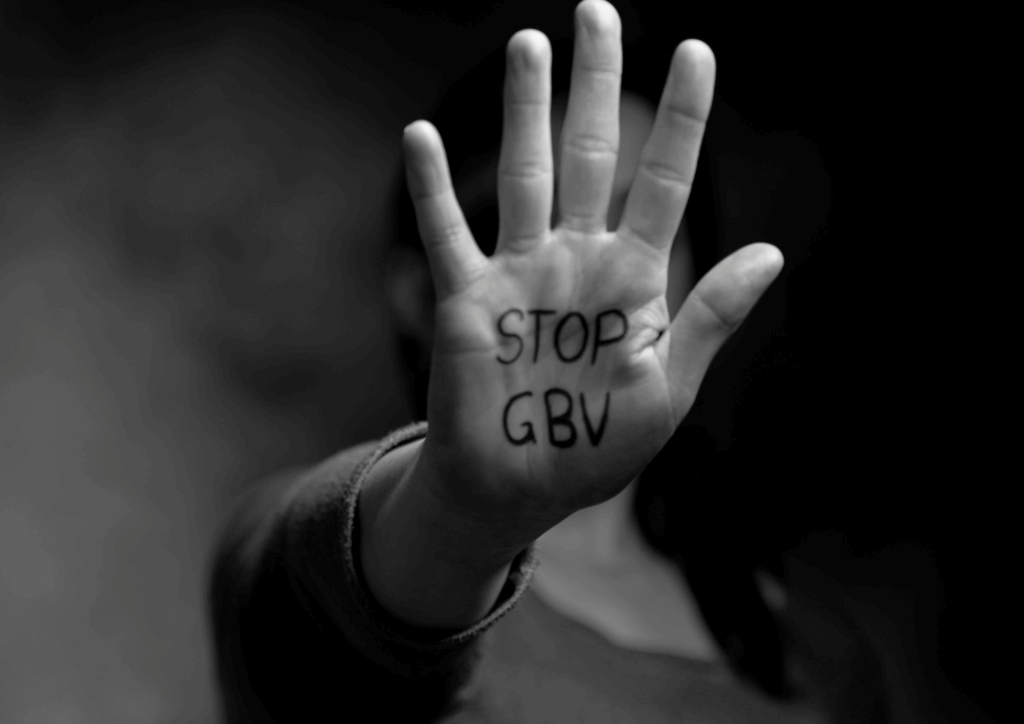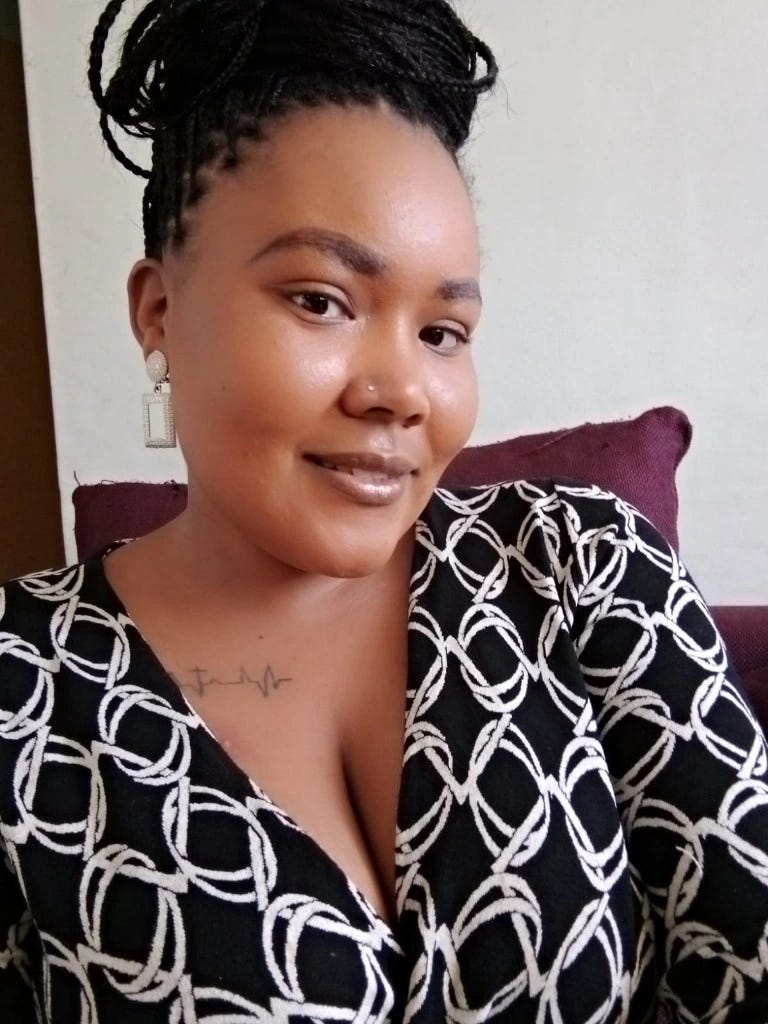Lincy Jepchirchir Transforming Communities Through Gender Advocacy
Originally published on EpicPulse Magazine here: https://epicpulse.co.ke/lincy-jepchirchir-transforming-gender-advocacy/
Lincy Jepchirchir is a Communications Specialist and a powerful advocate for gender equality, women’s rights, and the prevention of sexual and gender-based violence (SGBV).
Her commitment to gender advocacy is rooted in years of experience working with communities, adolescent girls, and young women, where she uses communication as a tool to drive awareness, shift harmful norms, and inspire collective action.
Through her work in social and behavior change communication and community engagement, Lincy has emerged as a leading voice in creating safer, more equitable spaces for women and girls.
For Lincy Jepchirchir, advocacy is a calling deeply intertwined with her identity as a communicator and champion for women’s rights. Currently serving as the Communication Officer at the Center for Domestic Training and Development (CDTD), she has found a space where her love for storytelling meets her fight for justice.
“I combine my love for storytelling with a deep commitment to social justice, gender equality, and women’s rights, especially for marginalized women and girls,” she says, describing her work. For Lincy, communication is about telling stories that matter and giving visibility to those who are too often silenced.
Her advocacy roots run deep. Growing up, she noticed the quiet injustices that shaped the lives of women and girls around her. Women’s contributions were frequently dismissed. Issues like domestic work, gender inequality, and even sexual and gender-based violence (SGBV) were treated as “normal.”
“Growing up, I witnessed how women’s contributions were often undervalued, and how issues like gender inequality, domestic work, and sexual and gender-based violence (SGBV) were either normalized or silenced.” Lincy Jepchirchir
Those early experiences never left her. “What drives me is the conviction that gender equality is not optional, it is a necessity for justice and progress,” she reflects. “My inspiration comes from both the lived realities around me and the gaps I saw in how society treats women and girls. Those moments stayed with me.”
That conviction has since become the compass of her career, guiding her to stand on the frontlines of gender advocacy.
Narratives That Transform
For Lincy, communication has always been the lifeblood of her advocacy. She believes the way issues are raised often determines whether people listen, engage, or act.
“My communication background has been the heartbeat of my advocacy,” she explains. “It has taught me that advocacy is not just about raising issues, it’s about how we raise them and who we bring into the conversation.” Lincy Jepchirchir
This approach has helped her translate complex, often painful issues like sexual and gender-based violence (SGBV) into stories that people can understand and connect with. Rather than simply broadcasting messages, she works to create a dialogue with communities.
“When engaging communities, I don’t just deliver messages, I listen, I learn, and I co-create solutions with them,” she says. “That two-way dialogue builds trust and ensures the advocacy reflects the lived realities of the people most affected.”
Those realities, especially for adolescent girls and young women in Kenya, are harsh and intertwined. Many face economic exclusion and are locked out of opportunities in education and employment. At the same time, they live with persistent threats such as harassment, early pregnancies, and child marriages, challenges often shrouded in stigma and silence. Weak support systems only deepen the problem, leaving many to suffer without reporting or seeking help.
“In Kenya, adolescent girls and young women face multiple, interconnected challenges, with economic marginalization and sexual and gender-based violence (SGBV) at the forefront. Many struggle to access jobs, education, or entrepreneurial opportunities, while harassment, early pregnancies, and child marriages remain persistent threats, often going unreported due to stigma and weak support systems.”
Gender-based violence (GBV) carries devastating personal and societal costs. The 2022 Kenya Demographic and Health Survey shows that 34% of women and girls and 27% of men and boys aged 15–49 have experienced physical violence since age 15, while 13% of women and 7% of men have experienced sexual violence. A 2016 National Gender and Equality Commission (NGEC) report found that survivors spend an average of KSh 16,464 on medical care, KSh 3,756 on police reporting, and KSh 3,111 on community reporting. Loss of productivity is even higher, KSh 223,476 for serious injuries and KSh 5.8 million for premature deaths. Nationally, GBV costs Kenya about KSh 46 billion annually, or 1.1% of GDP. For adolescent girls and young women, these economic pressures deepen vulnerabilities like poverty, early pregnancies, and school dropouts.
The ripple effects go further, undermining household stability and national development goals. Women, who are central to food security, education, and family well-being, are often unable to fulfil these roles when affected by GBV. Resources that should go toward children’s education, nutrition, and household growth are instead diverted to address the aftermath of violence. School dropouts among girls due to early pregnancies, stigma, or trauma perpetuate intergenerational inequality. Survivors also face exclusion from families and communities, leaving them more exposed to exploitation.
Unless GBV is urgently addressed, Kenya risks entrenching systemic inequalities that hinder progress toward Sustainable Development Goal 5 and other critical national commitments under the ICPD+25 and Generation Equality Forum to end all forms of GBV by 2030.
The statistics and reports become painfully real when Lincy recalls her encounters in the community. While working in the Korogocho informal settlement, she met a 17-year-old girl who had survived sexual abuse but had never spoken about it. Fear, stigma, and a lack of trust in available systems kept her silent.
She supported the girl in seeking justice and accessing psychosocial care, an experience that left a lasting imprint.
“That experience was transformative for me. It reminded me why I am committed to advocating for the rights and protection of marginalized women and girls. Advocacy is not just about policies or programs, but about standing with individuals, amplifying their voices, and helping them reclaim their power and dignity.” Lincy Jepchirchir
Redefining Advocacy, Breaking Barriers
In today’s digital age, advocacy is no longer confined to town halls and community meetings. For Lincy, social media and Social and Behavior Change Communication (SBCC) have opened powerful new frontiers in the fight against gender inequality.
“Social media provides a platform to amplify voices, share real-life stories, and challenge stereotypes on a scale that was previously impossible,” she explains. It gives survivors and advocates alike the courage to speak out and connects people across communities with a shared vision of equality.
We have already seen the power of social media advocacy in action, most notably through the annual 16 Days of Activism against Gender-Based Violence campaign. Each year, digital platforms become critical spaces for raising awareness, challenging harmful narratives, and mobilizing communities to take a stand against GBV. From grassroots voices to global organizations, social media continues to amplify stories, build solidarity, and keep the fight for gender equality at the forefront of public discourse.
Yet beyond the digital space, Social and Behavior Change Communication (SBCC) brings advocacy closer to the ground. Through targeted, culturally sensitive campaigns, Lincy and other advocates work to educate communities, shift long-held attitudes, and promote healthier behaviors. “SBCC allows us to design campaigns that meet people where they are,” she says, emphasizing the importance of tailoring strategies to local realities.
But this bold approach has not come without resistance. Speaking openly about feminism and women’s rights, particularly online, has exposed Lincy to the harsh edges of patriarchy. “One of the biggest challenges in my advocacy has been resistance and patriarchal attacks, especially on social media,” she admits. Criticism, trolling, and hostility are all too common, particularly when she challenges deeply entrenched norms.
The struggle is not just ideological. Limited resources often make it difficult to reach every woman and girl who needs support, a reality that weighs heavily on her mission.
Still, Lincy is far from deterred. She leans on supportive networks of allies, engages community leaders to promote understanding, and uses evidence-based, culturally sensitive approaches to open dialogue. These strategies strengthen the impact of her advocacy.
Every barrier she encounters, she transforms into an opportunity to push the conversation further, reminding society that change is not just necessary, but inevitable.
Reimagining Equality: A Vision for the Future
Lincy Jepchirchir believes ending gender-based violence and advancing women’s rights is not just the work of governments or organizations, it is the responsibility of everyone. Families, communities, faith leaders, the media, and individuals all have a role to play.
“Society as a whole has a fundamental responsibility in addressing gender-based violence and upholding women’s rights,” she stresses. “True change happens when everyone takes ownership and works collectively to create a culture of respect, dignity, and equality.”
“Society must challenge harmful norms, promote equality, and create safe spaces for women and girls to speak out. It also has a duty to hold perpetrators accountable, provide support to survivors, and ensure that laws and policies protecting women are not just on paper but actively enforced.” Lincy Jepchirchir
Her message to young women and girls aspiring to leadership or advocacy is equally clear: never underestimate your voice. “Believe in yourself, your ideas, your voice, and your potential matter,” she says. Even when speaking out feels small or uncertain, she reminds them, every perspective has the power to spark change. She stresses that leadership is never about perfection but about resilience and persistence, “using your voice to uplift others and transform your community.”
“Always stand for what is right, even when it is difficult, because integrity and courage define true leadership.” Lincy Jepchirchir
Looking to the future, Lincy envisions a world where women and girls live free from violence, discrimination, and systemic barriers. In this world, rights are respected, opportunities are accessible, and voices that were once silenced are amplified.
“I see communities, institutions, and governments actively challenging harmful norms, providing protection and support for survivors, and empowering women and girls to thrive socially, economically, and politically,” she reflects.
“My role in achieving this vision is to continue advocating, raising awareness, and amplifying the voices of marginalized women and girls. I work to influence policy and provide platforms for survivors to access justice and support. I aim to contribute to a society where gender equality is not just an ideal, but a lived reality.” Lincy Jepchirchir
In this world, rights are respected, opportunities are accessible, and voices that were once silenced are amplified. Through persistent advocacy, collaboration, and education, she continues to advocate, raise awareness, amplify the voices of marginalized women and girls, and influence policy so that gender equality moves from aspiration to lived reality.
It is inspiring to see the space Lincy Jepchirchir has carved for herself and the vision she is building through her advocacy. In her risisng, may many more rise with the courage to speak, the strength to lead, and the power to champion equality, because a just society is only possible when every voice is heard and every woman and girl can live with dignity and freedom.







